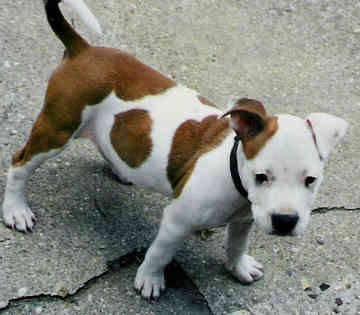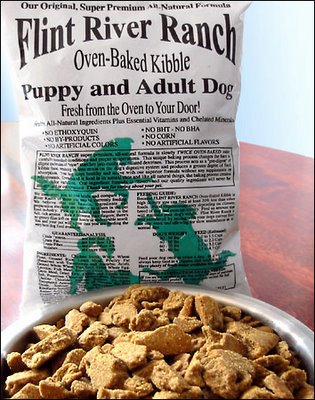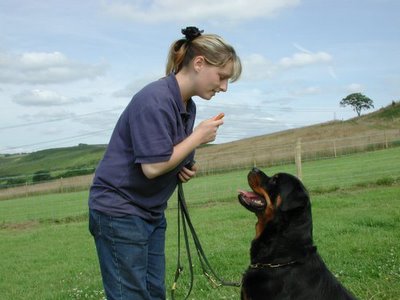Ringworm Identification in Pets: Treatment, Prevention and Home Remedies
"Ringworm" is the common name for the skin infection caused by a special group of fungi; it is not caused by a worm at all. The fungi feed upon the dead cells of skin and hair causing, in people, a classic round, red lesion with a ring of scale around the edges and normal recovering skin in the center. Because the ring of irritated, itchy skin looked like a worm, the infection was erroneously named. The fungi responsible are called "dermatophytes," meaning "plants that live on the skin" thus the more correct term for ringworm is "dermatophytosis." The characteristic "ring" appearance is primarily a human phenomenon. In animals, ringworm frequently looks like a dry, grey, scaly patch but can also mimic any other skin lesion and have any appearance.
WHERE WOULD MY PET PICK UP THIS INFECTION?
The spores of dermatophyte fungi are extremely hardy in the environment; they can live for years. All it takes is skin contact with a spore to cause infection. Infected animals are continuously dropping spore-covered hairs as infected hairs break off into the environment. Some animals are carriers, who never show signs of skin irritation themselves but can infect others readily. There are several species of dermatophyte fungi. Different species of fungi come from different kinds of animals or even from soil thus determining the ringworm species can help determine the source of the fungal infection.
TREATMENT
Commitment is the key to success especially if you have more than one pet. Infected animals are constantly shedding spores into the environment (your house) thus disinfection is just as important as treatment of the affected pet.
ORAL MEDICATION FOR INFECTED PETS
There are primarily two medications being used to treat ringworm: Griseofulvin and Itraconazole (brand name "Sporonox"). Veterinary dermatologists disagree as to which is better. Both medications are relatively expensive, must be given with food, and have significant potential to cause birth defects in pregnant pets.
Treatment with either medication typically is continued for 1-2 months and should not be discontinued until the pet cultures negative. Stopping when the pet simply looks well visually frequently leads to recurrence of the disease.
GRISEOFULVIN (brand name Fulvicin)
This medication must be given with a fatty meal in order for an effective dose to be absorbed by the pet. Persian cats and young kittens are felt to be sensitive to its side effects which usually are limited to nausea but can include liver disease and serious white blood cell changes. Cats infected with the Feline Immunodeficiency Virus commonly develop life-threatening blood cell changes and should never be exposed to this medication. Despite the side effects, which can be severe for some individuals, Griseofulvin is still the traditional medication for the treatment of ringworm and is usually somewhat less expensive than Itraconazole.
ITRACONAZOLE
This medication is highly effective in the treatment of ringworm but is available in capsules far too large to be useful to most small animals. This means that a special company must reformulated the medication into a more useful size. Nausea is a potential side effect for this medication but probably the main reason it is passed by in favor of griseofulvin is expense. Itraconazole is also effective in treating many life-threatening fungal infections whereas Griseofulvin only treats ringworm.
By increasing the amount of Itraconazole in the environment, we may be creating resistance in more dangerous fungi which could become a problem over the years. On the average, cats treated with Itraconazole and nothing else were able to achieve cure two weeks sooner than cats treated with Griseofulvin.
DOES PROGRAM CURE RINGWORM?
In the late fall of 2000, the Journal of the American Veterinary Medical Association published a study of over 200 cases indicating that Lufenuron (the active ingredient of Program) could be an effective treatment for Ringworm. This began as an observation that animals using Program or Sentinel for flea control did not get ringworm. Questions about this work have come up from the public since the release of this work. The fact is that the study is still under scrutiny by members of the American College of Veterinary Dermatology and "the jury is still out." It is clear that the doses purported to be helpful with Ringworm should not be harmful. At this time the use of lufenuron for Ringworm is reasonable if other more conventional treatments are concurrently used.
Other Ringworm Treatments:
#1-Clip hair around the ringworm patch. Once a day dip a cotton swab into tincture of goldenseal and paint the entire affected area. Limit the treated area to a dime-size spot in cats and small animals and up to a quarter-size spot in larger dogs. If there is more than one spot, alternate daily treatments from one spot to the other.
#2-Tea Tree Oil. Apply oil on a Q-tip or cotton ball to the affected area, twice the diameter of the lesion.
#3-Bleach. One part bleach to nine parts water (premixed), applied to the affected area twice the diameter of the lesion. DO NOT use near the eyes!
RescueCats, Inc. has gathered this information from various sources and does not recommend or endorse any one method of treatment. All treatments used are at your own risk.
Visit http://www.rescuecats.org for more useful tips and articles.
Chassie Has been an active volunteer for http://www.RescueCats.org since April 2000.













